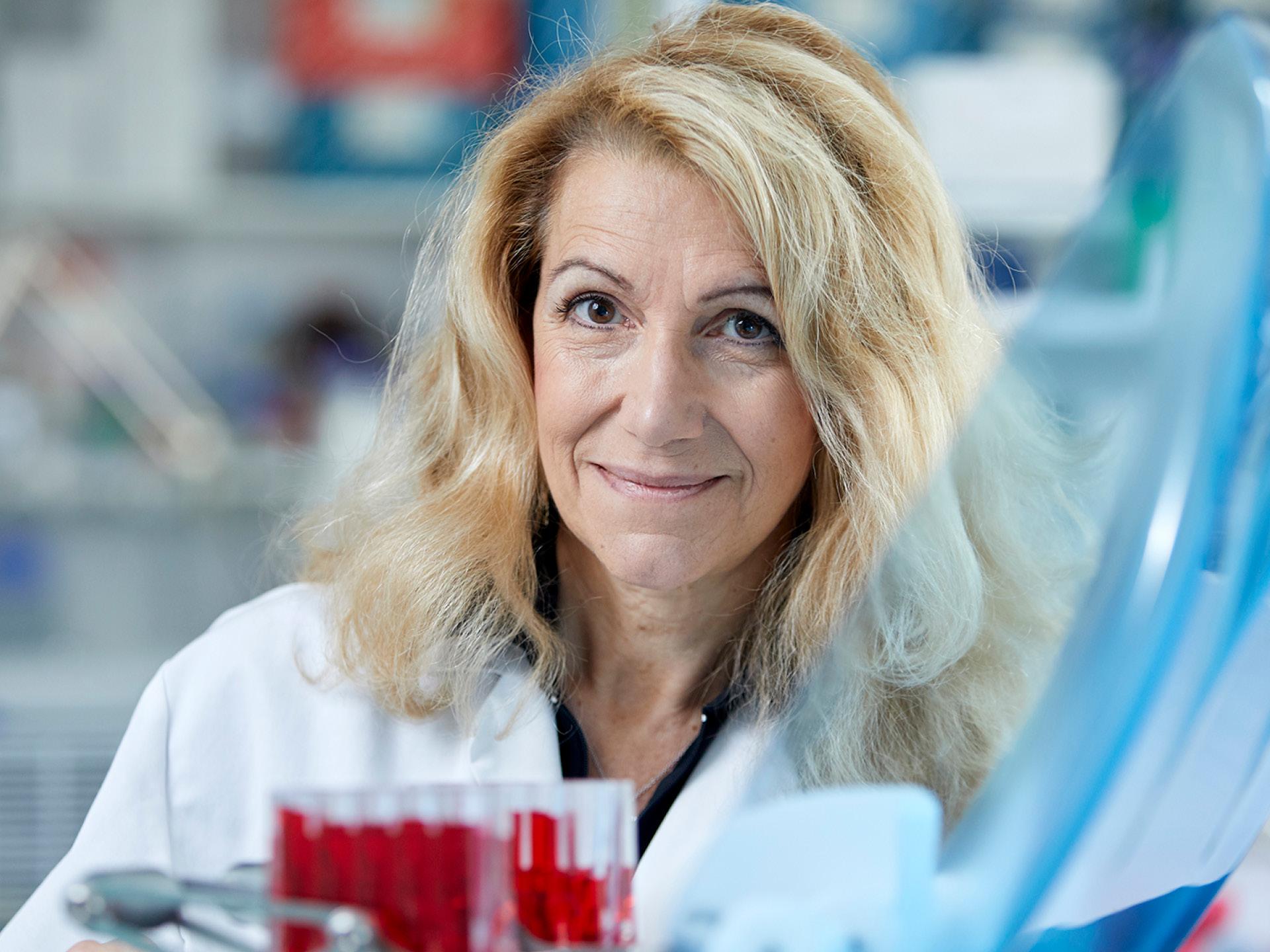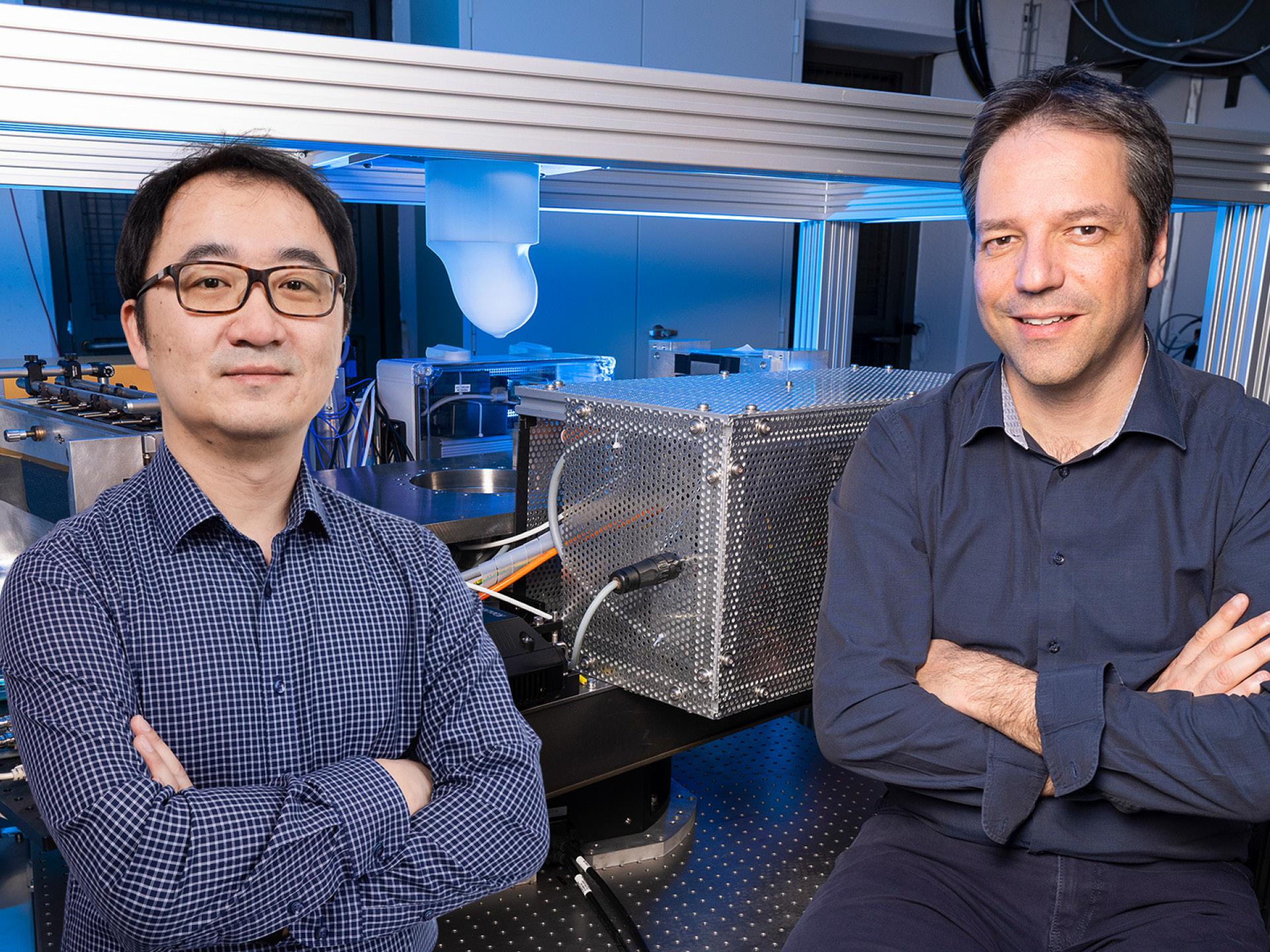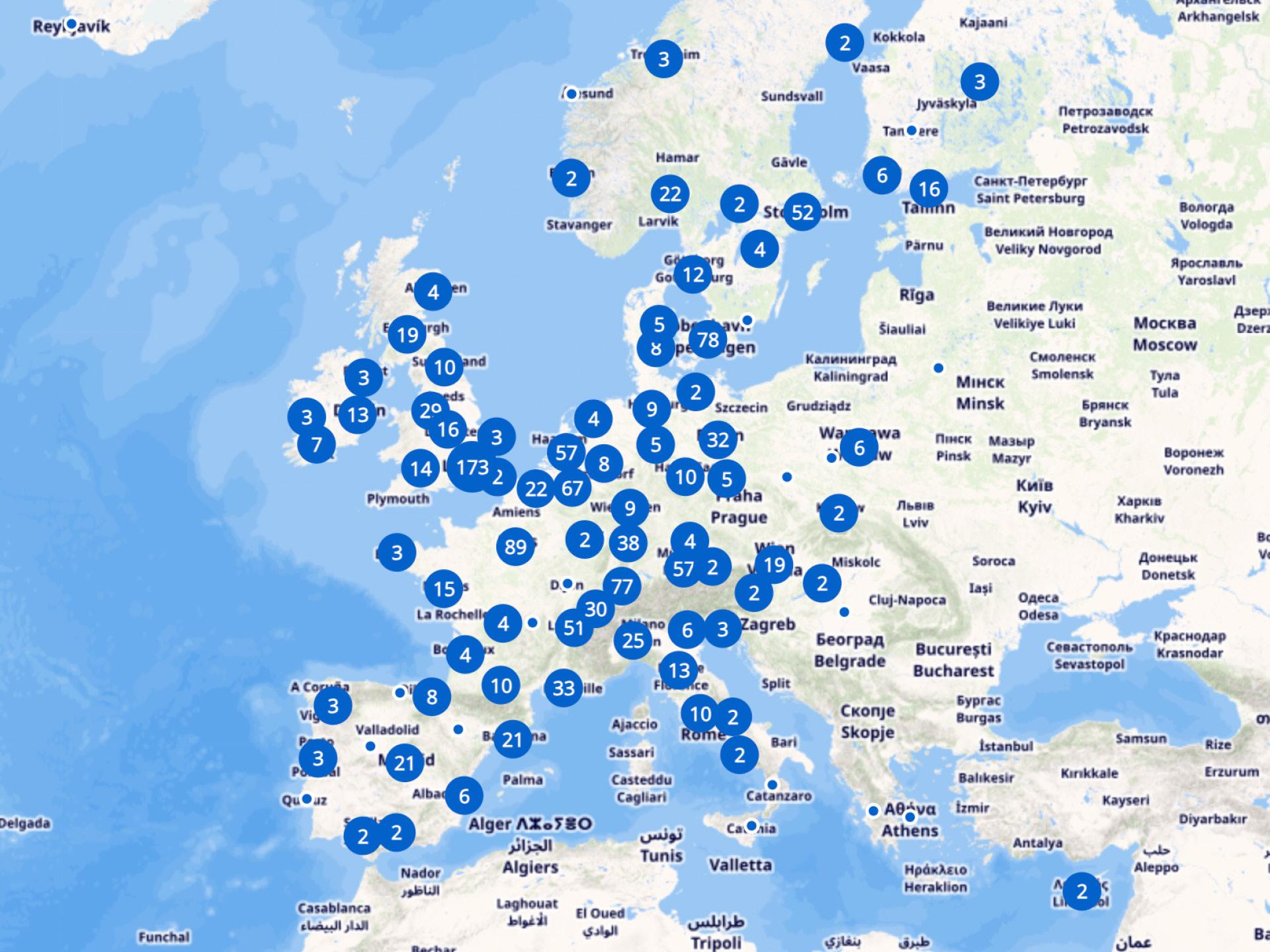Insight into cancer-combatting technologies

The increasing incidence of a range of cancers poses a global challenge, but innovation is improving the overall probability of survival. Advances in cancer diagnostics and treatments have played a pivotal role in saving 5 million lives in the European Union (EU) alone between 1988 and 2022.1
Podcast on technologies combatting cancer (7 February 2024)
One of the most distinctive features of the innovation ecosystem driving advances in cancer-combatting technologies is the role played by universities and public research organisations (PROs). The Patent Index 2023 shows that, across all technology areas, the share of universities and PROs among applicants in EPO member states rose slightly on 2022 (+1%) to 8%. However, when it comes to cancer-combatting technologies globally, universities and PROs account for almost a third of patenting activities.
Innovation in diagnostics
In the case of diagnostics, the EPO’s latest study on patents and innovation against cancer shows that contributions by the top medical technology companies have been growing in parallel with those by a group of top universities, hospitals and PROs for over a decade. The study is based on analysis of international patent families (IPFs) that shows inventions to fight cancer are up by more than 70% since 2015.2
Early detection of cancer is essential to increasing the likelihood of surviving the disease. Often, years before cancer spreads throughout the body, clues can be found in the blood. Some of the greatest growth in patenting activity during the past decade has been driven by the development of “liquid biopsies.” These convenient, minimally invasive cancer tests enable screenings based on the analysis of blood samples or other bodily fluids for cancer cells or tumour DNA fragments.

ISET® blood filtration to detect tumour cells
Italian molecular cell biologist and oncologist Patrizia Paterlini-Bréchot has developed a quick, non-invasive method that can find a single circulating tumour cell in a 10-millilitre blood sample – the equivalent of roughly one in 50 billion blood cells. Paterlini-Bréchot’s career has spanned hospital, university and research settings, including at INSERM. She also founded the company Rarecells to commercialise ISET® technology and was a 2019 European Inventor Award finalist in the Research category. The greatest growth in patenting within liquid biopsies in the past decade has been in tests that detect circulating cancer DNA, a subfield in which the EPO study shows University of California, MIT, Roche, the Broad Institute and Illumina to be the leading applicants. Once again, the mix of universities and corporations here is indicative of the broader field of cancer-fighting technologies.
Meanwhile, advances in artificial intelligence (AI) offer the potential for more rapid and precise identification of cancer types, stages and genetic features. These can be indispensable for improving cancer outcomes, enabling personalised treatment plans and the monitoring of disease progression. One notable recent trend is an uptake in the use of hardware accelerators to make the use of machine learning in diagnosis more efficient. Among other advances, this is driving growth in areas such as healthcare informatics, which deals with the management and analysis of health-related data, including electronic health records and medical imaging, to improve cancer diagnosis, treatment and prevention.

X-ray imaging for advanced breast cancer detection
Conventional X-rays struggle to detect breast cancers because they pass too easily through soft tissue, making it difficult to differentiate between breast tissue and tumours. A Chinese-Swiss team led by researchers Marco Stampanoni and Zhentian Wang has developed a new 3D X-ray imaging system that provides high-resolution images of soft tissue using a safe amount of radiation. This groundbreaking imaging technique can detect tumours while they are small, giving patients a fighting chance of survival. Prior to being nominated as European Inventor Award finalists in 2022, Stampanoni and Wang co-founded the university spin-off GratXray to commercialise their research.
Innovation in treatments
Interestingly, the global trend for top corporate applicants in cancer treatment diverges from that for top scientific institutions. It shows a strong decrease in the annual number of IPFs from corporate applicants after 2007, followed by a stagnation over the last decade. This underlines a shift in the organisation of innovation in cancer treatment, with pharmaceutical companies increasingly reliant on science-based pre-clinical research stemming from universities and PROs.
While classical anti-cancer agents are still very relevant in recent patents, it is the rise of biotechnology, including the advent of recombinant DNA technology, that heralded the start of targeted therapies and monoclonal antibodies. As a result, the landscape of cancer therapeutics has been reshaped in recent decades, based on an evolving understanding of the fundamental mechanisms of cancer, how it forms, why it persists and what causes it to spread. Twenty years after the completion of the Human Genome Project in 2003, an increasingly profound understanding of the genetic basis of cancer is emerging, along with the exploration of personalised treatment strategies and targeted therapies that can be tailored to a patient’s genes and the specific mechanisms of their cancer.
Immunotherapies help the immune system to respond better against cancer and fall into several categories, including small molecule immunomodulators, cellular immunotherapy, vaccines and antibodies, each with a unique mechanism of action.
Therapeutic vaccine platform to treat cancer
Scientists Madiha Derouazi (Switzerland) and Elodie Belnoue (France) have developed a platform to produce therapeutic anti-cancer vaccines. Derouazi established AMAL Therapeutics to commercialise the platform in 2012. Seven years later Boehringer Ingelheim acquired the company, with patents contributing significantly to AMAL’s value as a biotech startup. The team won the 2022 European Inventor Award in the Small and Medium-Sized Enterprises category.
Further therapeutic vaccines are also being developed for different types of cancer based on advances in mRNA technologies, an area in which the Hungarian biochemist Katalin Karikó has been a pioneer for the past four decades. Having been awarded the 2022 European Inventor Award in the Lifetime Achievement category, Karikó became a Nobel Laureate last year.
Other significant areas of innovation in immunotherapies include immune checkpoint inhibitors, which work by blocking the proteins on cancer cells that turn off the response of immune cells, allowing the immune system to destroy the cancer cells. Turning to targeted therapies, which have seen the greatest growth of innovation in recent years, several types of kinase inhibitors have been approved for cancer treatment, including tyrosine kinase inhibitors used for various types of tumours.
Biotechnology was also the fastest growing health-related field in 2023, and the top applicants broadly reflect the variety of actors that lead the field of cancer-combatting technologies too. As the EPO’s recent study on patents and innovation against cancer shows, Roche, University of California, Johnson & Johnson and INSERM have all maintained leading roles over the past two decades among the top ten organisations in the world developing cancer treatments and diagnostics, as well as the models used to study the effects and progression of cancer and to test potential treatments before they are used on humans.
Astrazeneca and Sanofi are in the top ten when it comes to immunotherapy, a subfield led by Roche, Bristol Myers Squibb and Johnson & Johnson. Novartis, which narrowly falls just outside the top biotechnology applicants at the EPO, also features strongly globally, especially in the development of cancer treatments.
Whereas the US has established a clear global lead in biotechnology as applied in the fight against cancer, just as it has across the board in cancer-combatting technologies, the EPO states have a clear lead in terms of European patent applications spanning the full spectrum of biotechnology, including as applied in industrial processes and plant-based biotech. The various areas are covered in greater detail in this separate discussion of red, white and green biotech.
More recently, AI and big data analytics have emerged as potent tools in cancer research, accelerating scientific investigations and helping to enable more precise treatment. AI systems such as Deepmind’s Alphafold may be able to further accelerate the development of new treatments by accurately predicting protein 3D structures, one of this decade’s breakthrough developments.
More broadly, oncology informatics is being pursued by several of the top medical technology applicants, whether via genomics platforms as the basis for personalised treatment strategies or apps for monitoring proactive treatment management outside the hospital. Further areas of innovation here range from advanced cancer imaging technologies to robotic and laser surgery for removing a patient’s cancer with more precision than conventional techniques. These too are often driven by AI-based pattern recognition or by navigating systems and surgical robots to help surgeons improve safety and efficacy.
While the EPO states taken as a whole lead in both medical technology and biotechnology, with the US not far behind, another common feature of both fields in terms of countries of origin is the dramatic growth in patent applications from P.R. China and R. Korea.
Technology transfer and knowledge sharing
Not only does the latest patenting activity reflect the wealth of innovation embedded in global innovation ecosystems. The patent system also allows technology transfer between the different kinds of applicants, by providing legal certainty and high-quality patents that facilitate knowledge sharing and even partnerships. Further, a closer look at the examples provided above will show that patents help university spin-offs and startups secure funding.
Discover over 1 300 European startups working on cancer-combatting technologies
Our Deep Tech Finder presents startups throughout Europe working across the fields of diagnostics and treatments, cancer models and ICT. The EPO’s latest tool blends business data with the information on each startup’s patent portfolio available in the EPO’s public patent databases. In total, it presents several thousand investment-ready startups seeking funding to develop their inventions across a broad selection of industries and technology fields.
Outlook
Traditional cancer treatments, including chemotherapy, radiotherapy and surgery, often remain the first line of treatment to either terminate the growth of swiftly dividing cancer cells or slow it down. The inherent limitations of these treatments include their significant side effects where damage to healthy cells occurs and their variable efficacy depending on the type of cancer. In recent decades, a range of new approaches have been developed that could overcome historical limitations to both established diagnostics and treatments. Accompanying the EPO’s launch of its study on patents and innovation against cancer in February was the release of the latest EPO platform on technologies combatting cancer, which presents over 130 datasets across the same four broad themes that have been integrated into the Deep Tech Finder mentioned above.
1 M. Dalmartello et al., "European cancer mortality predictions for the year 2022 with focus on ovarian cancer," Annals of Oncology 33, Issue 3 (March 2022), pp. 330-339. For more context, see the recent EPO study on patents and innovation against cancer.
2 Each IPF compromises a set of applications for the same invention, including a published international patent application, a published patent application at a regional patent office or published patent applications at two or more national patent offices. This provides a degree of control for patent quality by only representing inventions for which the inventor considers the value sufficient to seek protection internationally.





